AMD's DTX Form Factor: Smaller PCs for Everyone?
by Anand Lal Shimpi on October 22, 2007 1:00 AM EST- Posted in
- Cases/Cooling/PSUs
The Reference Platform
Why are we even talking about DTX today? AMD sent us its first DTX reference platform, showing us that actual progress had been made on the standard since its announcement at CES in 2007.
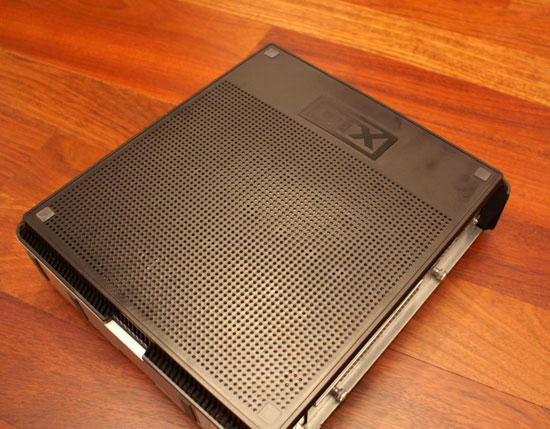
The system uses a reference AMD 690G DTX motherboard, AMD Athlon X2 BE-2350 (45W Athlon 64 X2 running at 2.1GHz), 1GB of DDR2 memory, with a standard 3.5" hard drive, slim form factor DVD drive and a 250W power supply.
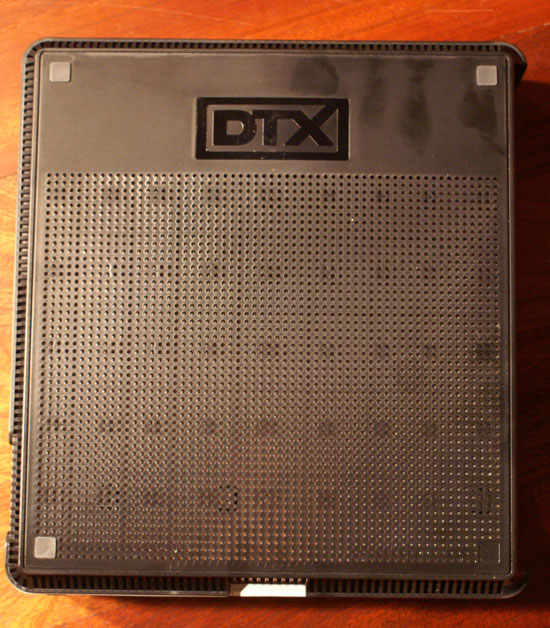


The system itself is quite compact, albeit not particularly stylish. It works and we already know how the Athlon X2 BE-2350 performs so there are no complaints there.
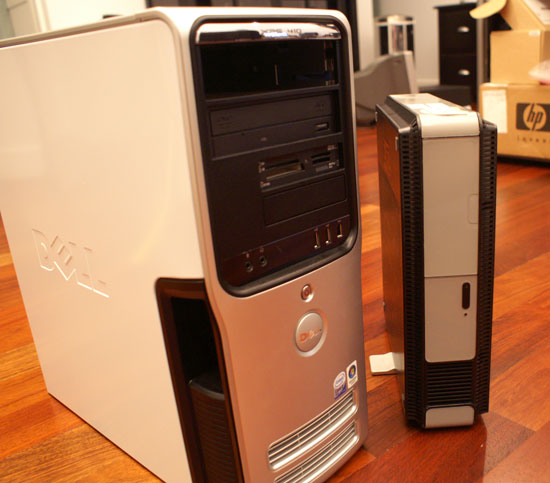
With a power supply fan and CPU fan running, it's reasonably quiet but obviously not silent. AMD mentioned that the prototype chassis we received was missing a vent over the power supply and thus would be louder than normal. We noticed that during usage the fans spun up to a level too high for use in a quiet HTPC environment. AMD cautioned us against drawing any conclusions based on this prototype's performance, and we tend to agree (although that does mean that the reference design is good for little more than some nice pictures).

The removable flap covers the DVD drive, but isn't hinged, it just comes off...thankfully this is a prototype
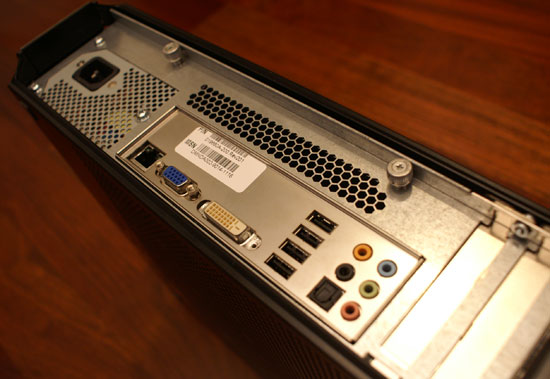
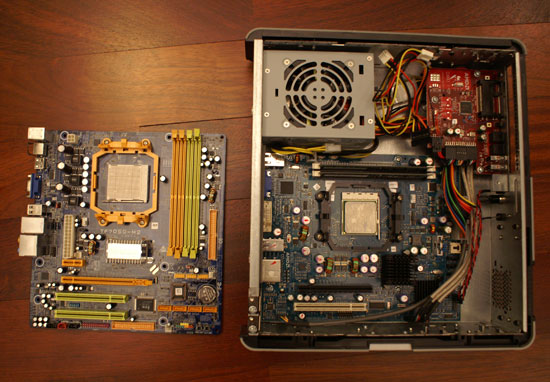
A micro ATX motherboard (left) vs. DTX platform (right)
Obviously the performance of the reference design doesn't really matter in the grand scheme of things, it's really a question of how well the designs that hit the market in the future fare.










37 Comments
View All Comments
leexgx - Monday, October 22, 2007 - link
monitors with DTX Clamps to Hold the PC to the back of the monitor :)Bluestealth - Monday, October 22, 2007 - link
Or a standardized docking slot for mini-desktops for monitors.Although the clamps allow for more varied case designs.
AmberClad - Monday, October 22, 2007 - link
I really can't see myself using this form factor. I use mATX right now, and that has a good balance of compact size and expandability -- enough expansion slots to meet an average user's needs without having an excess of empty slots like with regular ATX. If I wanted to go really small, I'd pick mini-ITX. I look at this DTX design, and I see something that is neither as flexible as mATX, nor as compact as mini-ITX. Building a decent HTPC with a motherboard that only supports two slots may prove difficult -- you'd have to compromise between picking a video card, TV tuner, and sound card. So DTX doesn't seem all that interesting for DIY use.On the other hand, it might be quite suitable for small form factor OEM systems. But with Apple's partnership with Intel these days, that's one system builder that probably won't be using this form factor...
Ajax9000 - Monday, October 22, 2007 - link
Foregoing the soundcard and using a digital audio connection to proper receiver/amplifier would be my choice.
I've been looking at mini-ITX but getting even a video card and a TV tuner (i.e. not USB) plugged in is difficult without resorting to exotic internal cabling/whatever.
So, I'd like a mini-DTX ... but supporting C2D thanks, the AMD processors don't excite me just at the moment ...
Shuttle is supposedly going to re-enter the motherboard market with boards such as the FP35 and FX38, but they are BTX-style.
yyrkoon - Monday, October 22, 2007 - link
DTX in my opinion has nothing to do with BTX, and has more in common with mini/micro-ITX.Ok sure, it is so far non widely accepted, like BTX, but that is where the commonalities stop.
Anyhow, it would be good to have something similar to mITX, and something that is standardized, and hopefully, not a rip-off fest waiting to happen(like mITX . . .).
defter - Monday, October 22, 2007 - link
So if you add a video card and a sound card, you will have zero slots left...It's unlikely that DTX will replace ATX among those who build PCs themselves, because of this slot limit. For example with micro-ATX you can have 4 expansion slots.
sprockkets - Tuesday, October 23, 2007 - link
yeah, but how many have you seen upgrade their video card? And if you need to replace the ethernet card, there is always usb.Think business stations as well. Oh wait, they are going back to diskless computer terminals.
Regs - Monday, October 22, 2007 - link
I think ATX is reaching its limits too. The size of a video card just keeps getting bigger and bigger..kyp275 - Monday, October 22, 2007 - link
I see this as mostly for the HTPC crowd than anything else, where you don't really need much as far as expansion slot goes.BansheeX - Monday, October 22, 2007 - link
One of the things that always confuses me is that today's PCs seem unnecessarily large and we could easily reduce material waste and power consumption by ditching ATX completely and making micro-atx/dtx/whatever the new standard. It seems logical that the desktop should move from 3.5 HDs to 2.5 HDs, 5.25 CD Drives to Slim CD drives, and full profile graphics/sound cards to low-profile graphics sound cards. At one point, I'm sure it wasn't technologically attractive, but these days even 2.5 hard drives can reach extremely high speeds and capacities. The price premium is largely a result of it NOT being the standard, so that would not be an issue. Floppies are gone or USB-alized, so that's not taking up space anymore.